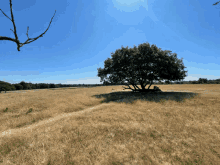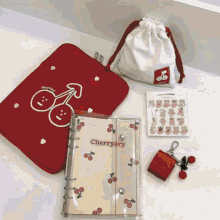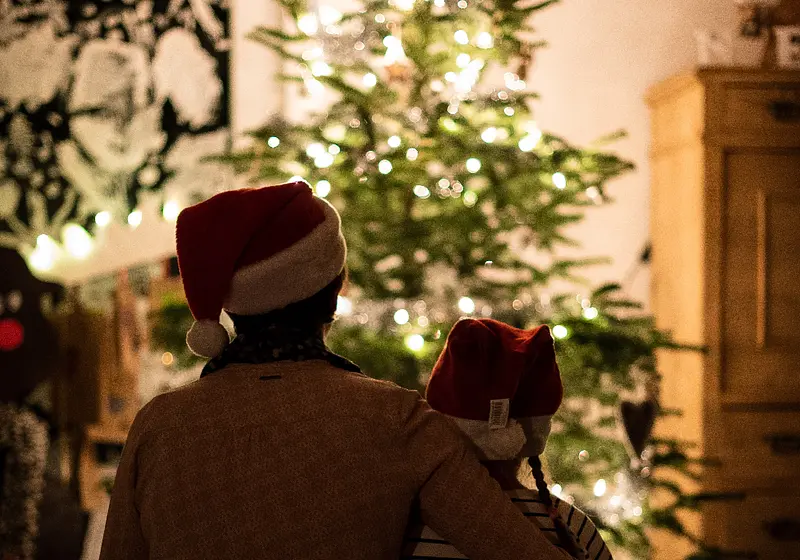Winter is just around the corner. The arrival of winter probably reminds most people of Christmas, but what about people in other communities? In this article, we will look at other major holidays celebrated during winter around the world.
Hanukkah
Hanukkah is one of the most important religious observances celebrated worldwide by Jews. Hanukkah is pronounced as kha-nu-kah, not ha-new-kah. Hanukkah celebrates the restoration of the Second Temple after the victory of the Maccabean over the forces of the Seleucid king Antiochus IV Epiphanes.
Antiochus had previously invaded Judea and desecrated the Second Temple in Jerusalem. Hanukkah is celebrated for eight days: In 2021, Hanukkah will be celebrated from Sunday, 28 November to Monday, 6 December. Every night on Hanukkah, a candle on the menorah, a nine-branched candelabrum, will be lit.
Only one candle will be lit on the first night of Hanukkah. For every day of the festival, an additional candle will be lit on the menorah. Hanukkah only lasts eight days, so the ninth candle is the shamash candle, which is used to kindle the other candles. Before the lighting of the menorah, a blessing is recited and traditional songs are sung afterwards.
Fried foods are eaten on Hanukkah. Some foods that are commonly eaten during Hanukkah in Europe are potato pancakes, while jelly donuts are enjoyed in Israel. Since Christmas takes place around the same time as Hanukkah does, a tradition of gifting small amounts of money, nuts, or raisins to children has developed in Europe. Dreidels, a four-sided spinning top, are played by children during Hanukkah, with pots of coins, nuts, or other prizes to be won.
Diwali
Diwali is one of the grandest festivals celebrated by Indians in many different countries. It has as many stories about it as different regions have distinctive traditions for celebrating this festival. However, one aspect they have in common is the agreement that Diwali is about the triumph of good over evil and light over darkness.
It is linked to the legend of the exiled Lord Rama’s return home after finally triumphing over the demon Ravana. The people of his land celebrated his return by lighting rows of candles and lamps, lending Diwali its character as a festival of lights. Diwali is observed on the 15th day of the Kartik month in the Hindu Lunar calendar. In 2021, it was celebrated on 4th November.
Diwali celebrations commonly last for five days. Two days before the official festival begins, metallic kitchen appliances like steel ladles are bought to ensure good fortune in North India. On the day before Diwali, colored powders, rice flour, and flower petals are arranged on the floor in floral or geometric designs.
These designs are also known as ‘rangoli’. As the sun sets on the third day of Diwali, also the main festival day, clay lamps are lit around houses, followed by firework displays. Activities on the days before and after Diwali differ across regions.
For example, effigies of Ravana, the demon, are made and burnt at dawn on the day before Diwali in the Indian region of Goa. Meanwhile, in Karnataka, people bathe in oil and consume sweets to start the celebrations.
Each region has its favorite dishes, but some favorite dishes are naan (flatbread) and sabji, which consists of rice with fried vegetables. Savory snacks like channa bhatura (sourdough with chickpea curry), samosas (fried pastry with savory fillings), or murukku (spiral shaped fried snack) are paired with the Diwali meals. During Diwali, gifts are also exchanged and new goods are bought as Diwali is a celebration of new beginnings.
Dongzhi
The Dongzhi festival, which translates to Winter Solstice Festival in English, is one of the biggest festivals celebrated across China, Japan, Korea, and Vietnam annually. Dongzhi means the arrival of winter, and the Dongzhi Festival is celebrated on the shortest day and longest night of winter. In 2021, Dongzhi will be celebrated on 21st December.
In the Zhou Dynasty, Winter Solstice would be a day of worship, and also the beginning of a new year. It was only in the Han Dynasty that the Winter Solstice was celebrated as a festival. Celebratory activities would be organised and both government officials and commoners had the day off to participate in the festival.
In the following dynasties, the Winter Solstice festival became a community celebration. People of the same surname or clans would gather to commemorate their ancestors at ancestral halls and give offerings to the deities. A grand banquet would be held after the completion of the ceremony.
Today, families across China gather to eat tangyuan (glutinous rice balls).Tangyuan is made in green, pink and sometimes other colors. They are cooked in sweet soup and served to each family member. In southern China, red bean and glutinous rice are served during meals as it is said to drive away evil spirits, while in northern China, people customarily eat dumplings.
In the region of Suzhou, people eat wontons. It is said that the King of Wu had once been disgusted with the palace menu and wanted to try something different. A member of the court, Xishi, had made wontons for him.
Those wontons became his favorite food and from then on, Suzhou people made wontons in memory of the King and Xishi. Xishi is also the first of the ‘Four Great Beauties of Ancient China’. In other countries, Dongzhi foods are also similar to those eaten in China: red bean porridge is served in South Korea, glutinous rice balls are eaten in Vietnam, and the Japanese like to have Yuzu fruit.
In Taiwan there is a slight twist from the ordinary proceedings of the Dongzhi celebration. People would take tangyuan that has been used as offerings and stick them on the back of the door, on windows, on tables, or on the back of chairs. This is said to keep evil away from children.
A second unique custom in Taiwan is the offering of nine-layer cakes to worship their ancestors. Nevertheless, most Chinese would consume more tonic foods during winter to nourish their body. Winter is said to be a time where physical activities should be limited.
Kwanzaa
Kwanzaa is a nonreligious and nonpolitical festival observed by African Americans and some Africans in other parts of the world. Kwanzaa celebrates African American culture, community, and family to help African Americans connect with their cultural heritage. The name of the festival is derived from a Swahili phrase meaning ‘first fruits’.
Swahili is spoken widely across Africa. As its name suggests, Kwanzaa is modeled after harvest celebrations in Africa. Kwanzaa was first held in 1966 by the activist and university professor Maulana Karenga and his wife Tiamoya as a way to help strengthen bonds in the African American community.
The US also has postal stamps to commemorate Kwanzaa. There have been several kwanzaa stamps issued, the first in 1997 and the latest one in 2018.
The festival lasts for seven days. It is held every year from December 26 to January 1. Each day of the festival is dedicated to one of the seven principles of Kwanzaa.
The first principle is unity, followed by self-determination, collective responsibility, cooperative economics, purpose, creativity, and lastly, faith. The seven principles are paired with the seven symbols: fruits, vegetables and nuts; a straw mat; a candleholder; ears of corn (maize); gifts; a communal cup signifying unity; and seven candles in the Kwanzaa colours of red, green, and black. Black represents people of African descent worldwide, red represents the noble blood that unites people of African ancestry, while green represents the land of Africa.
On each day of the celebration, the family will light one candle in the candleholder and gather to discuss the corresponding principle. On the sixth day, a community feast called the karamu will be held. Some participants may opt to wear traditional African clothing to the feast.
The menu of the feast will always include symbolic foods like the mazoa and muhindi (corn symbolizing fertility for each child in the family). The main dish will be a one-pot stew, with many recipe options for families to choose from. Some common recipes are Ghanaian groundnut stew, red red (African stewed black-eyed peas) or Cajun jambalaya.
Bread, rice, sweet potato pies, or coconut cakes may accompany the stew. Over the years, some communities have chosen to include gift-giving in the Kwanzaa celebration as well.
Lohri
Lohri is a popular winter festival celebrated mostly by people in the Punjab region of India. Lohri will take place next year on 13th January 2022. Lohri marks the arrival of harvest season, and is celebrated for a bountiful harvest.
Lohri is a communal celebration. Before the night of the festival, children are sent out to collect logs for the bonfire. They are then given sweets in return for their efforts.
At night, the entire community will gather around bonfires to celebrate. They may also sing and dance around the bonfire while throwing food like popcorn, gajak, or puffed rice into the fire. The bonfire is dedicated to Lord Agni, the fire-god of Hinduism, in hopes that he will bring them prosperity.
This is especially important for farmers, who pray and show gratitude towards Lord Agni for blessing them with abundant produce. Lohri is also an auspicious day for newlywed couples and parents with newborns. The two main foods that are eaten during the festival are til (sesame) and jaggery.
Once the fire dies out, dinner is served. Dinner food includes favorites like makki di roti te sarson da saag (corn flour pancakes and mustard spinach) and Dahi vada (chaat).
Las Posadas
Las Posadas is a Mexican festival celebrated in Mexico and in parts of the United States. The journey that Joseph and Mary made from Nazareth to Bethlehem is the central theme of Las Posadas. Las Posadas is celebrated from Thursday, December 16 to Friday, December 24, 2021.
Las Posadas has its origin in colonial Mexico. The friars of San Agustin de Acolman (near Mexico City) are the first organizers of Las Posadas. The first Las Posadas was started by Friar Diego de Soria, who obtained a papal bull from Pope Sixtus V to celebrate Las Posadas.
This is one of the traditions which the Church believed would help integrate the indigenous people into Christian culture. Las Posadas has spread over the centuries to be celebrated in households as well, and not just in churches. Today, neighbourhood committees will choose a different family to host the celebration, or be the ‘innkeepers’. Other people in the neighbourhood can bring along food or help with decoration so that the cost of the celebrations do not fall entirely to the host.
During each evening of the festival, a procession is led by children through the town streets. At the head of the procession is a child dressed up as an angel. Following behind are children in silver or gold robes carrying candles and images of Joseph and Mary.
Some children will also be dressed up as shepherds or the three wise men. Musicians and other adults will accompany the procession to give it a festive feeling. They will visit selected homes and ask for lodging.
It is a custom to reject the request, though the host will provide refreshments. The procession will also read out scriptures and sing carols at the house stops. Afterwards, the community will gather for a feast.
The feast always includes traditional foods like romeritos (baked shrimp), bacalao (dried cod fish), roast turkey, salad, and sweet and sugary buñuelos. In some Latin American communities, Las Posadas includes gift-giving but gift-giving is saved for Three Kings Days in other communities. Mass is held after the procession.
After the service, children will break open pinatas in the shape of stars. Prizes are contained in the pinata.
There are definitely more winter festivals that are not included in this list. Nonetheless, winter is evidently a time of joyous celebration for many people around the world.














